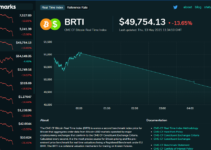FINTECH ARTICLES OF THE WEEK 04/01/16The combination of finance and technology is, quite literally, FinTech and why some technologists, marketers, and bankers see an evolution in digital, electronic technologies going back more than 40 years. That’s also the mindset that the FinTech startups seek to disrupt. In working on (OK, struggling with) a marketing article that articulates a client’s FinTech value proposition to bankers, I came across an email with this month’s most-read article in BAI’s Banking Strategies: “Fintech and Techfin.” Here again, banking writer and consultant Chris Skinner gets to the heart of the matter and clearly explains the difference in thinking and point of view between innovator startups and incumbent bankers. We have a lot of links this week, but if you have time to read only one, make it this one. The pulse of FinTechFinTech partnerships, CX and what banks can learn from other digital innovatorsPartnerships between traditional financial services organizations and FinTech firms was the most mentioned trend among the 100 global financial services influencers surveyed by Jim Marous, publisher of the Digital Bank Report. “The reason for this paradigm shift is because new Fintech start-ups lack the scale, capitalization, reputation of security, ability to navigate complex regulations and the product scope of traditional financial firms. Alternatively, traditional banking organizations are hindered by legacy operating systems, capacity to innovate, agility and technology expertise,” Marous tells Accenture. Regulator moves to create new FinTech frameworkOne of the primary FinTech trends we are tracking in 2016 is we call “The Empire Strikes,” named because we figured regulators would start to formulate regulations for FinTech this year. Last week, Amy Friend, chief counsel with the Office of the Comptroller of the Currency, explained that rather than “saying ‘no’ right off the bat” regulators will be more receptive in exploring FinTech regulatory issues and understanding the emerging models, The Wall Street Journal reports. The OCC released its “Responsible Innovation” white paper (PDF) this week, a move applauded by the American Bankers Association. How payment structure affects user behaviorIn an insightful study of payments behavior and user-experience design and their relation to the rise and fall of gym memberships, Colleen Roller’s post for Digital Telepathy shows why payments need to fall in line with consumer behavior and how the relationship between the two can impact product usage and profits. “When payment and consumption are distanced enough so that consumption begins to feel free, people can end up discounting the value of the product or service precisely because it does feel free. In short, free fails to motivate usage. A ‘pay as you go’ paradigm is the one that motivates usage because of the way in which it draws attention to the cost.” The trends to watch in mobile paymentsS&P Global Market Intelligence survey findings show that 75% of mobile banking app customers use mobile payments, and additional research points that mobile bill pay has increased over a few years ago, eMarketer reports. But as PYMTS.com points out, Android Pay, Samsung Pay and other digital wallets aren’t catching on as quickly as previously predicted. Mobile wallet interoperabilityYes, mobile payments are growing in popularity, but the lack of centrality is a serious impediment to further adoption, according to Daily FinTech. Designing and setting a central standard and bitcoin usage are among several factors that could speed up the mobile adoption process. |
Finance, Meet Technology
April 1, 2016


